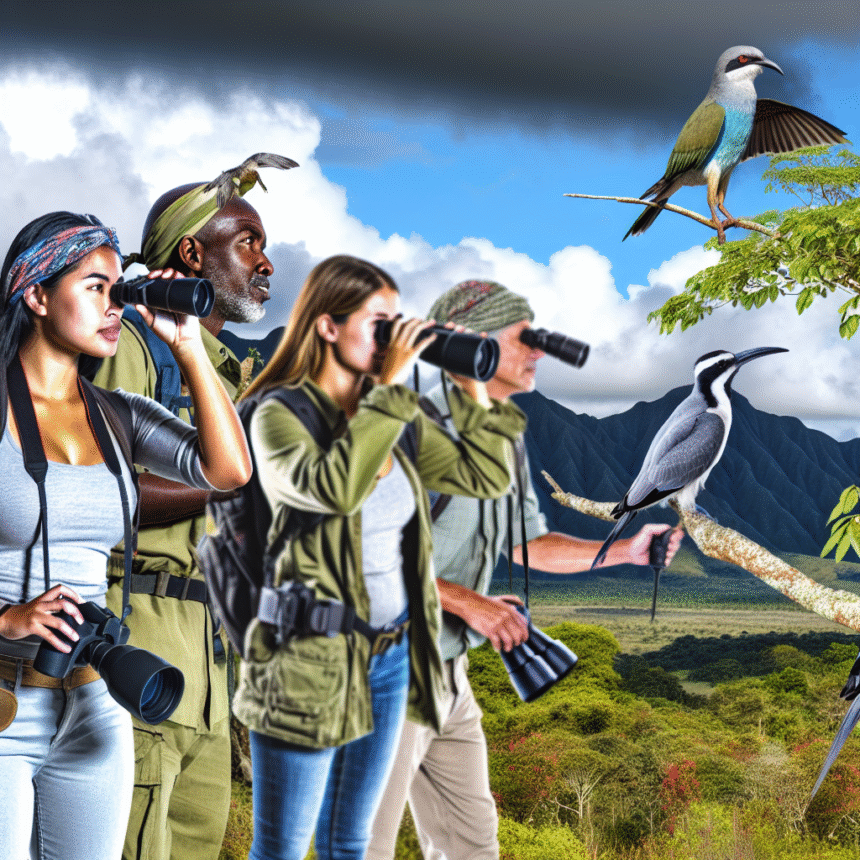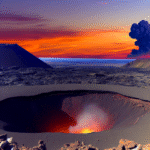“Mosastelkur í Grindavík”, “Rísstarli, Fiskhjallar við garð”, “Höfn, Þorgeirslundur: kollgræningi”, “Vogsósar í Selvogi, ógreindur greipur”, “Reykjavík, við Stjórnarráði: kúastarli”, “Barrþröstur í Tjarnarbyggð”.
Six seemingly innocent messages, but after a quick read or translation, some of us might choke on our morning coffee, lose focus in a work meeting, or suddenly regret not filling the fuel tank the night before. I’m one of those who must drop whatever is in my hands and get going. The reason? There’s a bird somewhere out there that doesn’t belong here — and neither do I, until I’ve seen it.
Autumn of legends
This year has hosted the kind of autumn that will be whispered about in damp bird hides decades from now. Iceland — that tiny North Atlantic trampoline, where exhausted birds from three continents land and immediately wonder what terrible choices brought them here — has delivered one miracle after another.
The autumn of 2025: the one with the Bobolink, the Philadelphia Vireo, the Brown-Headed Cowbird, and plenty more. The autumn that made the most dedicated of us sprint across mossy lava fields, leave half-finished meals behind, and cancel dental appointments en masse.
I’ve been lucky enough to see (and document) almost all of them, following the jump-in-your-(or-someone-else’s)-car-and-drive-as-fast-as-possible tactic. I’m what you might call a compulsive, hardcore birder.
Brotherhood of the binoculars
The community of hardcore birders in Iceland is a small but close-knit network, most members being Icelandic men above 50. There are two or three guys in the west, a couple in the north, a few more of us in the southwest, and I’ve heard rumors of someone in the east.
While some members meet regularly, most of us only meet after a message of certain significance has been posted on the WhatsApp groupThe flæking watch — translating toThe Vagrant Watch. When we meet, customary greetings rarely involve more than a short nod or a “daginn”. Occasionally, in moments of great excitement or uncertainty, someone might whisper, “Hefurðu läði fuglinn?” — Icelandic for “Have you seen the bird?” Sociologists would call this “bonding through shared purpose”. Walking past us, you might simply call it four middle-aged men standing silently in the rain, pretending not to be cold. I would say it’s a mix of both. And I love it.
Risk, reward, and muddy ditches
For the most dedicated among us, there’s little or no time for chitchat until one has secured an observation of satisfactory quality. That might take seconds, minutes, hours, or days. It all depends on how desperately one wants to see the bird.
Drive across the country overnight? Postpone the mortgage payment and book the next flight north? Risk of a red light in downtown Reykjavík? If the bird is rare enough and the stars align, there’s little that can stop a hardcore birder with a blank spot on the list.
Once, I heard a story about a city employee found lying in a muddy ditch photographing a rare Siberian bird — only to have their boss randomly drive by, recognize them, and ask why they weren’t at home in bed, considering they’d called in sick earlier that day. In the world of hardcore birding, there is risk and there is reward. And in Iceland this autumn, the rewards have been sweet for those willing to take risks.
A jet stream hotel
The community of birds in Iceland is also fairly small. Some 77 species are considered resident breeders, including a few that nest nowhere else in Europe. But Iceland’s position between continents makes it a temporary life buoy for migratory birds blown off course — a sort of avian emergency landing pad in the North Atlantic.
Funnelled by weather systems and heavy winds, species from the eastern and western flyways are sometimes pushed towards Icelandic shores. Finally seeing land, they drop into the nearest possible habitats — which might be the fish-drying racks of Garður on the Reykjanes Peninsula, or the pastry-crumb-strewn pavement of Lækjartorg in downtown Reykjavík.
The latter was the case for a lone female Brown-Headed Cowbird, reported on Austurstræti at 12:51 on October 24 — while thousands were taking part in the Women’s Strike. The North American species, a brood parasite and much-disliked bird on the other side of the Atlantic, had probably been blown towards Iceland by perfectly timed winds from the west.
As the crowd gathered on Arnarhóll, the Cowbird vanished into the masses, joining the chants of the thousands. The birders had no choice but to take part. When the crowd later dispersed, the Cowbird was rediscovered by one lucky birder on Ingólfsstræti, feeding and roosting atop a tree among local starlings.
As the sun kissed the horizon, a small group of birders with little to no voice left, clustered against a white fence opposite the deli, cracking necks and creaking knees for a better view of the vagrant. The commotion drew curious passersby, some asking for a peek through a pair of binoculars. One passerby summed up the scene neatly: “Men will do anything but go to therapy.”
Post-twitch stress disorder
A question I’m often asked is whether it’s more fun to chase a bird someone else has found or to discover one myself — “twitching” (or “listing”) versus “discovering”. There’s little in this world more intensely captivating than being confronted with a potentially rare bird in the field, relying only on your own identification skills while your heart rate doubles.
Your binoculars fog up, your camera jams, your hand trembles like a caffeinated snipe. Did the bird have a white rump or not? Was the call a high, squeaky “tzeet” or a short, purring “prrreet”? It’s the birdwatching equivalent of a high-speed chase — exhilarating, confusing, and slightly sweaty.
But everyone knows you’ll end up with fewer “ticks” if you only go solo. So, when given the choice between chasing a legendary rarity or wandering alone and finding nothing, I usually choose the thrill of pursuit. In that case, the dinner, the email to the coworker, the doctor’s appointment, the lower body workout, and the exhibition opening can all wait.
In a world where there might be 10, 50, or 100 years between sightings, there’s no bigger FOMO than the fear of missing out on a rare bird. The last thing you want is a “nemesis bird” — one you repeatedly fail to see. That can get ugly. In my home country, Norway, I missed out (or “dipped”) on a presumed American Herring Gull three times in a row, involving three full-day trips, a demolished bread budget, and a sore back. Among my hardcore birder friends, that story is considered cute — a mild case of post-twitch stress disorder.
The language of birds
What exactly drives this obsession — whether “twitching” or “discovering” — is hard to pinpoint. Some of us say it’s the uncertainty of pursuing a living creature that might fly off, get run over, or be eaten by a cat before you arrive (all of which has happened to me or my friends). Others blame instinct, the ancient urge to hunt and gather. Some see their list as half-empty, others as half-full. A few simply admit they have nothing better to do. For many of us, it is the sense of community that keeps us going, the feeling of reciprocity through sharing bird observations with each other. Discover two twitchand vice versa.
I’ve been lucky enough to find my place amongst the “daginns”, the WhatsApp notifications, and the twinkling eyes of my new friends in the Icelandic portion of the global birding community. And trust me, as a newcomer, there’s no greater incentive to learn the language than when Icelandic hardcore birders whisper the location of a rarity in their mother tongue while we’re all peering at the same small brown bird in a big green hedgerow. There’s a reason my first words in Icelandic were prepositions.
So, if you ever spot a small group of people standing silently in the rain, pointing expensive glass tubes at a bush — come over, and don’t worry. We’re fine. We’re living our best lives, one rare, windblown vagrant at a time, overjoyed to tell you about the autumn of ’25.
The post A Field Guide To Hardcore Birding: Life On The Vagrant Bird Watch appeared first on The Reykjavik Grapevine.














